Starting your dream aquarium often brings unforeseen challenges. One such obstacle I encountered was my fish perishing in my newly established tanks, leaving me bewildered and guilt-ridden. After extensive research, I discovered the notorious “New Tank Syndrome” as a common culprit, but soon realized it was just one piece of the puzzle as a myriad of factors can contribute to the demise of your aquarium inhabitants. Learn how to keep your new tank’s inhabitants healthy from this comprehensive article.

For me, one such obstacle was that, after multiple tries, my fish would keep dying in my new tank and I had no idea why.
I had no idea how to handle the situation and felt incredibly guilty.
I knew I was doing something wrong, and after doing some research I discovered that the most common reason for my problems was something called the New Tank Syndrome.
However, with time and experience, I’ve found that this syndrome was not the only reason for new fish deaths.
It’s possible that all of your aquarium’s water parameters are within the norm and you still witness fish die overnight.
It gets even more overwhelming when you do a water change, and your fish start turning their bellies one by one.
It doesn’t matter if yours is saltwater or a freshwater aquarium, in this guide, I’ll explain all the causes behind this vicious cycle.
Most importantly, you will find solutions that will help you keep your fish from dying when you add them to your new tank again.
Why do my fish keep perishing in my new aquarium?
Actually, there are multiple reasons why your fish would die after their environment has been changed.
I’ve included the causes for this to happen, as well as ways to solve the problem.
Here are the reasons behind fish that keep dying after you put them in your new tank:
1. The aquarium isn’t fully cycled – New Tank Syndrome.
Freshwater and saltwater aquatic inhabitants generate waste that degrades into toxic ammonia and nitrites.
On the other hand, there are beneficial bacterial colonies that promptly turn ammonia and nitrites into non-toxic nitrates.
The process of converting organic waste (e.g. fish feces, decaying plants, food leftovers, etc.) into fish-safe compounds is called a Nitrogen cycle.
An aquarium with a functioning nitrogen cycle has established beneficial bacteria all the time.
In healthy tank water that’s safe for fish, ammonia and nitrite should be 0 ppm (parts per million).
If your fish keep dying when you put them into a new tank then you’re likely dealing with an uncycled aquarium. When the nitrogen cycle isn’t fully established, the toxic ammonia and nitrites build up and can kill your pets overnight as a consequence. This unfortunate, yet common occurrence is also known as the “New Tank Syndrome”.
There are many things that can throw your aquarium’s Nitrogen cycle off balance:
- You haven’t waited enough for the tank to fully establish its beneficial bacteria;
- You added too many fish at once in a small tank;
- You did not dechlorinate tap water before pouring it into the fish tank;
- You dramatically overdosed the dechlorination conditioner by accident;
- You replaced 100% of filter media in the filter – that’s where most of the beneficial bacteria live;
- You did not remove a dead fish immediately after the accident;
- You treated the aquarium with a fish antibiotic;
- You feed too much and uneaten food gets stuck on the substrate.
Solving the uncycled tank problem (New Tank Syndrome).
To make sure the environment in the tank is safe for its new aquatic inhabitants, you’d want to test your water parameters regularly.
If you add fish to a new tank that has high ammonia or nitrite levels, you’re putting your new pets in danger.
Author’s note: Most fish stores offer free water tests when you bring them a sample of your aquarium’s water. They’ll usually tell you that the water is fine without giving you any further details on the readings. However, the truth is that even a slight deviation from the norm in ammonia or nitrite can be dangerous and potentially lethal to your freshwater fish. This often leads beginners to think that their tank’s water is good, and yet their fish keep dying.
I’ve personally been a victim of this and was discouraged to no end.
That was until an experienced friend of mine advised me to get an accurate test kit and perform water tests at home.
In my experience, using API Master’s test kit is the most accurate way of measuring the ammonia and nitrite levels in a fish tank.
You can find these kits online and in almost any fish store and they have different versions for freshwater and saltwater aquariums.
There are also water test strips but they are not very reliable when it comes to accuracy.
Anyway, if the readings are concerning, it’s advisable to do a water change and add beneficial bacteria.
Replacing a portion of the water will dilute the toxins and the beneficial bacteria will help with building a healthy bacterial population.
There are bottled nitrifying bacteria products that are quite effective when it comes to getting the cycle going.
I recommend using either Tetra SafeStart Plus or API Quick Start for freshwater aquariums, and Instant Ocean BIO-SPIRA for saltwater fish tanks.
Providing a surface on which the bacteria can establish themselves is also essential for the success of the setup. Therefore you need to set a filter with porous filter media in your new fish tank.
For more detailed instructions, you can check out my guides on how to get rid of ammonia and how to reduce nitrite levels.
With all being said, it is also possible to move fish to an uncycled tank, without them dying.
This is also known as the fish-in cycling method.
In essence:
- You add one small fish per 10 gallons of water to control the released ammonia;
- You then add generous amounts of bottled bacteria to the water to make sure the colonies establish themselves fast enough.
Still, you have to keep in mind that this approach may be a bit more challenging if you’re adding fish that generate more waste.
For example, goldfish are known for being quite messy, which is why they often die immediately after being added to an uncycled tank.
Also, same as with Bettas, the fact that they’re often added to a tank that’s too small doesn’t help.
The extra ammonia and nitrite, generated from the fish waste in such confined spaces cause intoxication and oxygen deprivation.
I presume this is the reason why I often get contacted by new goldfish owners whose pet fish died overnight.
I strongly recommend checking out this article on when to put fish into a new tank. There you will get even more insight on how to keep your fish from dying when introducing them to their new home.
2. Sudden change in species-specific water parameters.
Different fish species require different parameters to thrive.
The stress caused by sudden changes in these parameters is one of the most common reasons why fish die in a new tank.
Species-specific water parameters include:
- Water temperature;
- Water acidity is also known as pH;
- General water hardness is also known as GH;
- Salinity levels measured in specific gravity for saltwater aquariums.
If the temperature or pH readings of your new aquarium’s water differ from what your pets are used to or need to live comfortably, the drastic shift may affect their health and kill them overnight.
In other words, even if the aquarium is cycled, you also have to monitor these water parameters, to ensure a healthy environment for your pets.
Anyway, some aquatic species will exhibit unusual behavior if something’s off with temperature or pH. For example, mystery snails would float at the surface of the fish tank and a Betta may lose its color.
Nevertheless, other species are much more sensitive to temperature, pH, and salinity shifts, and die immediately after being added to a new freshwater or a saltwater aquarium.
How to prevent fish deaths caused by sudden changes in water parameters.
To make sure your fish won’t get stressed out after you introduce them to their new home, ask for the pH and temperature at which they were kept at the pet store.
You should also make note of the salinity readings if you’re starting a saltwater aquarium and you are to take care of marine fish.
Don’t be satisfied with a “the parameters are fine” reply.
Ask for the details.
After you have all the measurements, try to replicate them in the aquarium you’re starting.
This way you will minimize the chances of stressing your fish and prevent them from dying after you introduce them to the system.
If your fish die one by one in their new tank, you’d also want to make sure that there aren’t drastic day-to-night temperature fluctuations.
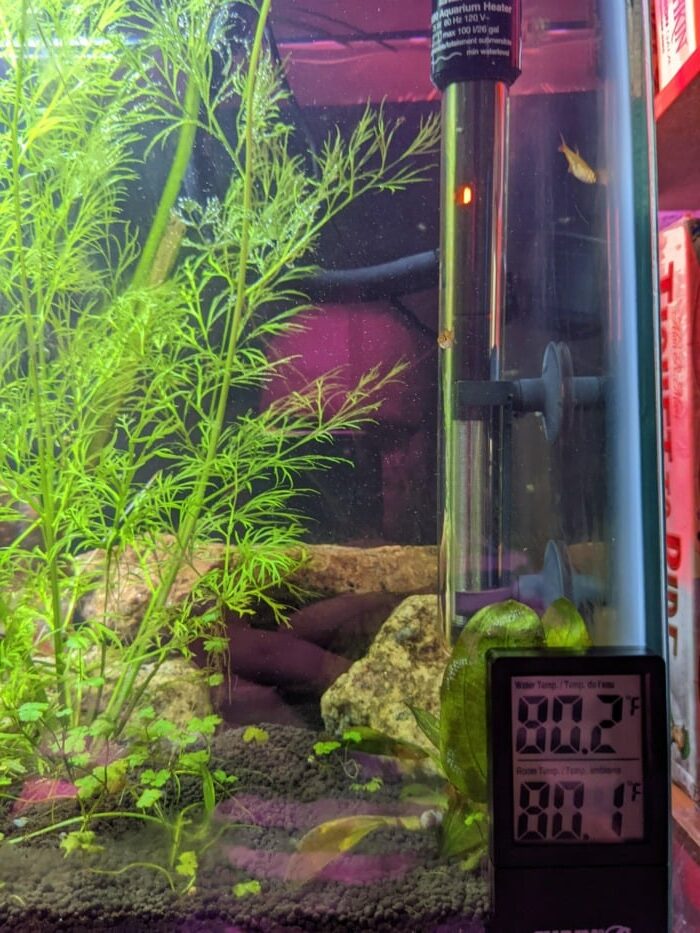
If the room temperature during the day is 80 °F (26.6 °C), and 50 °F (10 °C) during the night, then the difference is too great to be considered safe. In fact, even a shift of 5 to 6 °F can be harmful to aquatic fish.
Not only that but the fluctuations are even more drastic in smaller 5 to 10-gallon tanks.
Your new aquarium’s inhabitants won’t like this unstable environment, which may lead to deaths among more sensitive species.
The more hardy species will likely suffer from a compromised immune system.
This makes your fish extremely vulnerable to external parasites and fungi that they would otherwise fight off on their own. Often, such diseases manifest as white spots appearing on the fish and the most common culprit is a condition known as Ich.
To prevent water temperature shifts and provide your new fish with a stress-free environment, you should set up a reliable aquarium heater that’s the right size for your tank.
A heater with a thermostat will automatically detect when the water’s temperature is falling.
It will then turn on, maintaining it within the desired range. If you suspect that’s the case, visit this article where I give recommendations on good aquarium heaters for small tanks.
3. Changing too much aquarium water at once.
Fish are more or less adaptable creatures and as such, they tend to get used to certain compounds in their water.
One such compound is Nitrate. Too much Nitrate in a tank could lead to algae issues, but it’s a little-known fact that at high levels it can slowly kill your fish.
We’re usually told that we should change the aquarium’s water in order to remove the built-up Nitrate. That being said, fish do adapt to it to a certain degree.
Removing too much Nitrate through a large water change at once can send your fish into what’s known as Osmotic shock. A fish in Osmotic shock can die almost immediately. If it doesn’t it will exhibit symptoms such as upside-down or sideways swimming and other forms of bloat, known as Dropsy.
How to avoid stressing your fish with water changes?
The best way to protect your fish from the damage of a large water change is to replace smaller portions of water.
For example, if you want to exchange 30% of the water in an aquarium do two water changes of 15% each.
Perform the smaller water changes 1 hour apart to minimize any potential shock to your fish.
My preferred way of doing this is by changing a small portion of water in the morning and then doing another small water change in the evening.
4. Fish were too stressed from the transportation.
Transporting a fish in a bag can in itself be stressful for your pet. Enough that it could potentially kill it, seemingly right after you’ve put it in its new tank.
Fish have different tolerances to stress from a changing environment.
Neon tetras can be fragile in that regard, whereas Guppies, Swordtails, Platies and Mollies are pretty hardy.
See, stress has an actual biological impact on these animals. Here’s how stress can kill your pet fish:
- The fish becomes stressed from a rough travel, handling and getting chased with a net, change in water temperatures between the tank and its fish bag, etc.
- Stress weakens its immune response.
- There are bacteria and other microorganisms that are always present in fish, but are kept under control by the fish’s body if its immune systems is working properly.
- These microorganisms take over the stressed fish who now has a weak immune system.
- The fish quickly gets sick and, in some severe cases, dies in the next couple of hours.
How to avoid stressing fish during transportation?
How much transportation would stress a fish is not something we have too much control over.
I’ve had pet fish die while still in the bag, that I personally brought home, being very careful along the way.
Then again, I’ve had fish being sent to me across 3 states that came in perfect condition.
One way to avoid the risks here, is to be picky about the fish while still in the pet store. Look for fish that seem active, and lively. These are good signs the fish are healthy and not prone to stress.
Don’t get fish that seem lethargic, regardless of how much you like their color patterns or appearance.
Lethargic fish are likely already too stressed.
Some people go around and actually select the most stressed-looking fish to take home “and save them” but that should only be done if you’re very experienced in the hobby.
5. Failing to acclimate fish properly.
Proper fish acclimation is essential to prevent your newly purchased pets from dying when moving them to your new fish tank. A poorly acclimated fish could die even if you put it in an aquarium with the perfect water parameters.
More often than not, when you get your new aquatic buddy, it comes swimming in a plastic bag that contains water from its previous aquarium.
Many beginners would float the bag for a couple of minutes to even out the temperature and then dump the fish along with the water into its new home.
However, this way they may introduce pet store pathogens and parasites into their aquarium. This creates an unhealthy environment that may eventually kill your fish.

Furthermore, if you don’t acclimate your pets properly, they may die from the sudden shift in pH or Nitrate contents, which can put them into a lethal osmotic shock.
Even if you’ve provided the ideal water parameters, the stress caused by the sudden change of environment may put your fish’s health in danger.
Author’s note: Some more sensitive species just can’t be successfully transported over long distances. By the time they arrive at your home, their anxiety levels may be so high that you just can’t do anything to alleviate their stress.
How to acclimate your fish properly to prevent them from dying.
To acclimate your new fish properly, you should put the unopened bag into the tank and let it float for 20 to 40 minutes. Don’t worry, a fish that’s properly packed can survive for up to 48 hours in a transportation bag.
Anyway, the 20 to 40 minutes are sufficient to even out the aquarium’s water temperature and the bag’s water temperature.
Then you should open the bag, use a net to take the fish out of the bag, and move it to its new home.
Important: Never add the fish along with the pet store water!
Discard the bag water into the sink.
Have a look at this video for a step-by-step guide on how to acclimate fish properly.
Author’s note: In some cases, the fish may even arrive dead. If you happen to find yourself in such an unfortunate situation, you should take a picture of the fish inside the unopened shipping bag. You should send the picture to the seller, as there’s usually an “alive arrival guarantee”.
6. You’ve added a sick fish.
If your water tests turn out perfect but your pets keep dying after you add them to a new tank, then you may have purchased sick fish.
It’s hard to tell whether a fish carries a parasite, especially if you’re a beginner.
So even if the water tests turn out fine, the fish may surprisingly die in a day or two if it was sick to start with.
On top of that, many novices add their pets to their new home without following a quarantine procedure.
By putting an infested fish into a new aquarium, it introduces the parasite to the system.
This may cause further complications and fish deaths. You could start seeing your other pet fish dropping one by one because the disease keeps spreading onto them. Disease can also be the reason behind fish continuously dying in an established tank where everything else seemed fine before the new sick fish was introduced to the system.
How to avoid fish deaths caused by sickness?
The best way to add your fish safely to their new tank and avoid deaths caused by sickness is to quarantine your new pets for 14 days before putting them into their new home. Setting a quarantine tank and performing a preventative treatment of newcomers with something like Seachem Paraguard is the best approach.
By doing so you will avoid tank infestation and keep your current and future pets from dying.
Unfortunately, setting up a quarantine tank can be expensive and tedious.
There is a way to avoid all of that, however:
To minimize the chances of getting sick fish, you should always purchase your pets from reputable sellers.
Author’s note: Small local fish stores don’t usually have the best aquarium hygiene. Sometimes they run untraceable amounts of fish medicine in their tanks to suppress any visible symptoms of fish illness.
Anyway, you can check out my guide on the best online fish stores for some recommendations. If you prefer buying your fish from a pet store, pay attention to the conditions they’re kept at.
Are there too many fish in one aquarium?
Are there too many densely populated “treatment” tanks in the store?
If the answer to these questions is yes, this is an indication that the fish you purchase may turn out sick.
Furthermore, even if they’re not sick, if they weren’t properly taken care of, they will likely be too stressed out.
If that’s the case, no matter how good water conditions you’ve provided, you may not be able to keep your new fish from dying despite providing them with good water conditions.
7. Incompatible fish.
Each pet fish you’re adding to a tank has its own personality – some fish are more aggressive and territorial, others are more timid and nervous.
This applies even if all of your pets require the same water conditions to live a healthy and happy life.
The contrasting personalities of your new fish may be the cause of rising tension and stress that will eventually kill some of them.
Furthermore, some fish may physically abuse and kill their tank mates.
For example – adding small fish such as minnows, danios, or Nerite snails to an established aquarium in which you keep a larger goldfish.
The goldfish may eat its new tank mates or harass them to the point of exhaustion.
Don’t be surprised if a few of your newly added guppies died overnight because you put them in a tank with a betta. To protect its territory, a Betta fish would often attack and kill peaceful and timid fish such as guppies.
Avoiding death caused by fish incompatibility.
When you’re choosing your new aquarium’s inhabitants, always do thorough research on their compatibility.
This way you will avoid stress caused by bullying, fights, and, worst-case scenario, deaths.
Author’s Note: If you’re adding a single fish to a tank with ideal water parameters, and it dies soon after you’ve introduced it to its new home, you should research whether it needs to be kept in a group, also known as a school. Schooling species may die out of stress if they’re kept on their own.
More Fish Ideas: Best Community Fish for a Social Freshwater Aquarium .
8. Overfeeding.
So you add a fish to its new cycled tank with the ideal water conditions and you feed it generously to make sure it feels well taken care of.
You wake up the next day and you’re shocked to find your pet dead.
What happened?
Well, despite your good intentions, you’ve probably overfed your fish.
The amount eaten itself is not the culprit here, but rather the waste and the food that wasn’t eaten.
In this case, the sudden increase of fish waste quickly released an excessive amount of ammonia that threw your nitrogen cycle off balance.
The ammonia intoxication caused by overfeeding is the reason why your fish may have died soon after you’ve added it to its new tank.
Avoiding overfeeding.
You should always be mindful of the amount of food you’re giving your fish.
Feed them only once or twice per day.
Also, be sure to only give your fish small amounts that don’t end up on the aquarium’s bottom.
Recommended Read: How Often Should I Feed My Pet Betta?
Anyway, to further lower the chances of ammonia and nitrite spikes, you can use a mesh or a gravel cleaning siphon to remove all food leftovers 5 minutes after you’ve added the meal of choice.
Don’t worry – your pets won’t starve to death. Actually, most fish can live without food for a week and it’s not common to get a hefty meal each day in the wild.
So remember – keep portion sizes in moderation and don’t exceed two meals per day.
9. The tank is too small and became overcrowded.
If you don’t research the appropriate tank size for your pet fish you risk overcrowding the tank by adding too many inhabitants.
Overcrowding leads to stress in fish, which in turn leads to aggression and fin nipping, weakened immune systems, a very high chance for ammonia spikes and so on.
All of these combined, could kill your new pet fish almost immediately.
Overcrowding my tanks is something I’m also guilty of, as I did not know better back when I first started keeping fish.
Large pet stores rarely inform their customers about it, in an attempt to sell more fish…
Overcrowding can have dire consequences for fish even in established aquariums. A very common scenario:
So the Nitrogen cycle in your tank works properly and everything and you decided to add a couple of new fish to the system. Turns out, however, you added one too many.
You also immediately started feeding more, to cover for the new additions but this lead to even more food leftovers.
This doubled down the trouble and the beneficial bacteria in the tank could not handle the increased ammonia in time. The Nitrogen Cycle in the tank is no more established.
You started seeing fish dropping dead, mainly from the ammonia spike, regardless of whether they were from the new batch or from your old ones.
How to avoid overcrowding a fish tank?
Firstly, research how much space the fish you’d like to keep need to feel comfortable.
Google is your friend here – just type in something like goldfish recommended tank size in their search bar and press Enter. Do this for each individual fish species you’d like to keep.
Then take a look at a cheatsheet with all tank sizes and gallon capacities of some sort and create a plan.
If your room space doesn’t allow for a larger tank – don’t get as many fish.
If it turns out your tank is too small – don’t get discouraged. There are many interesting setups that can be done in a small tank, even for a beginner.
Maybe Check These Fish Ideas Next: 23 Fish Ideas for a Small Tank

Over to you
It’s exciting when you have a vision of how nice your new aquarium is going to turn out and how happy its inhabitants are going to be.
I hope that my guide made it easier for you to put this vision into reality.
Paying attention to all water parameters may seem a bit overwhelming if you’re a novice.
Nevertheless, I can assure you that once you understand how they affect the well-being of your fish and invertebrates, you won’t have to worry about fixing things like the New Tank Syndrome.
While it takes a bit of effort to provide the ideal environment for your new pets, the end result is always rewarding.
With that being said, even if you follow my recommendations strictly, your aquatic buddies will inevitably go through a bit of stress until they adapt to the new environment.
But don’t fret – if you did what you’re supposed to, in about two weeks or so your new fish will get used to their new aquarium and you won’t worry about them dying.
Anyway, feel free to leave me a comment below if you have any further questions!
I’d be more than happy to help.

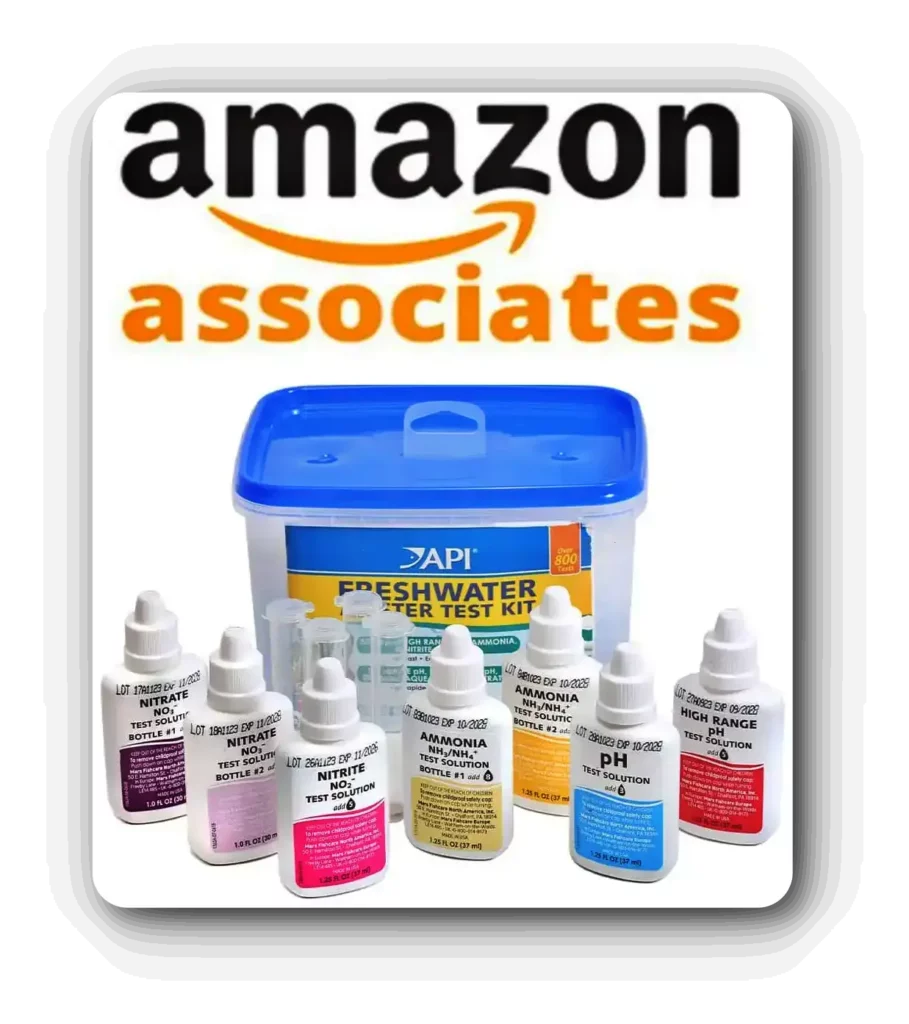
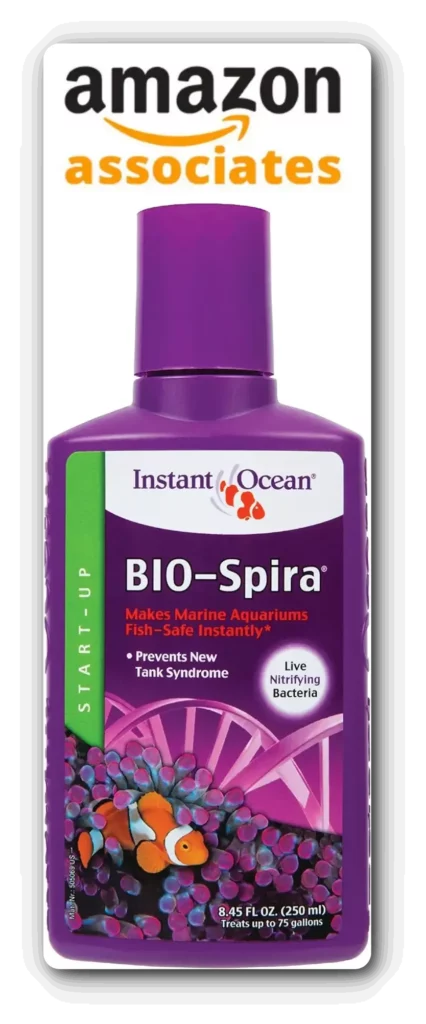
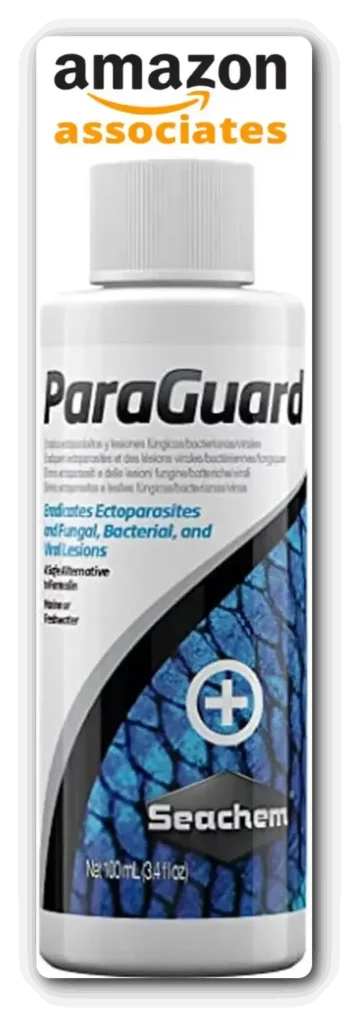

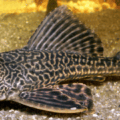

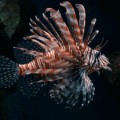
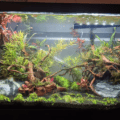
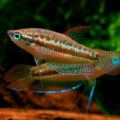





1 thought on “Why Do My Fish Keep Dying in My NEW Tank?”